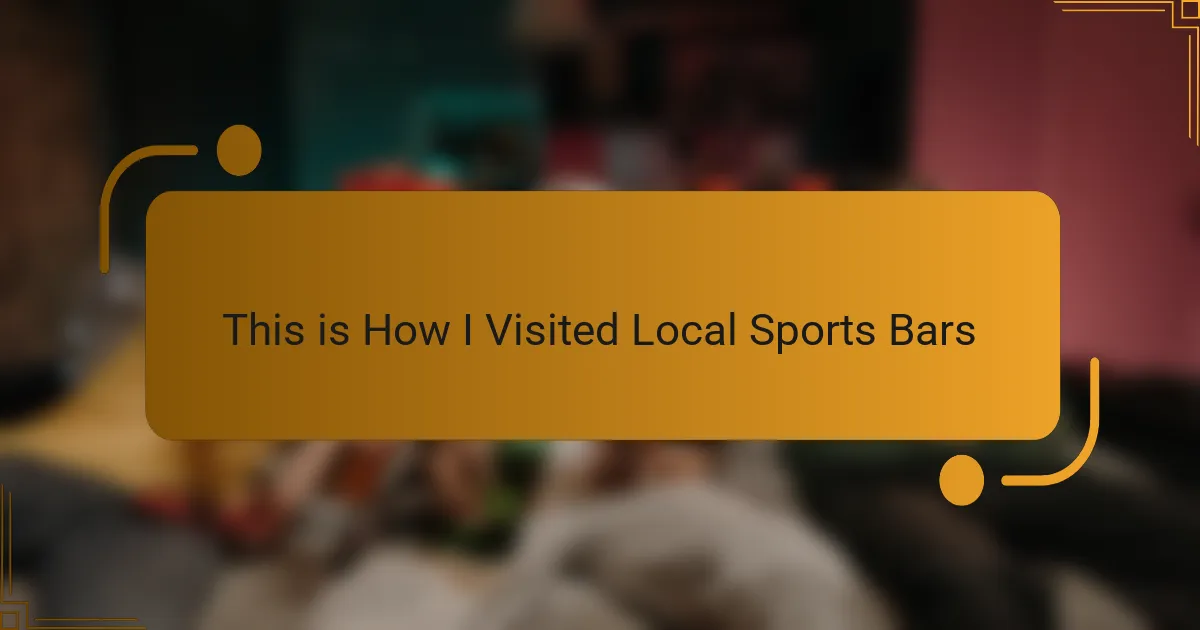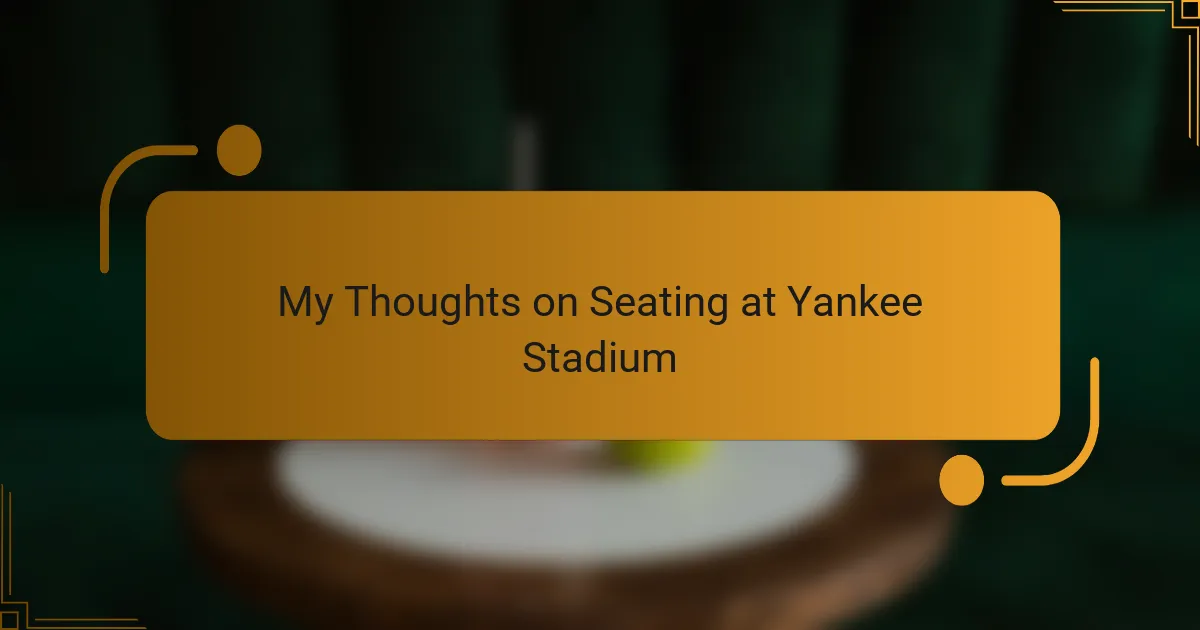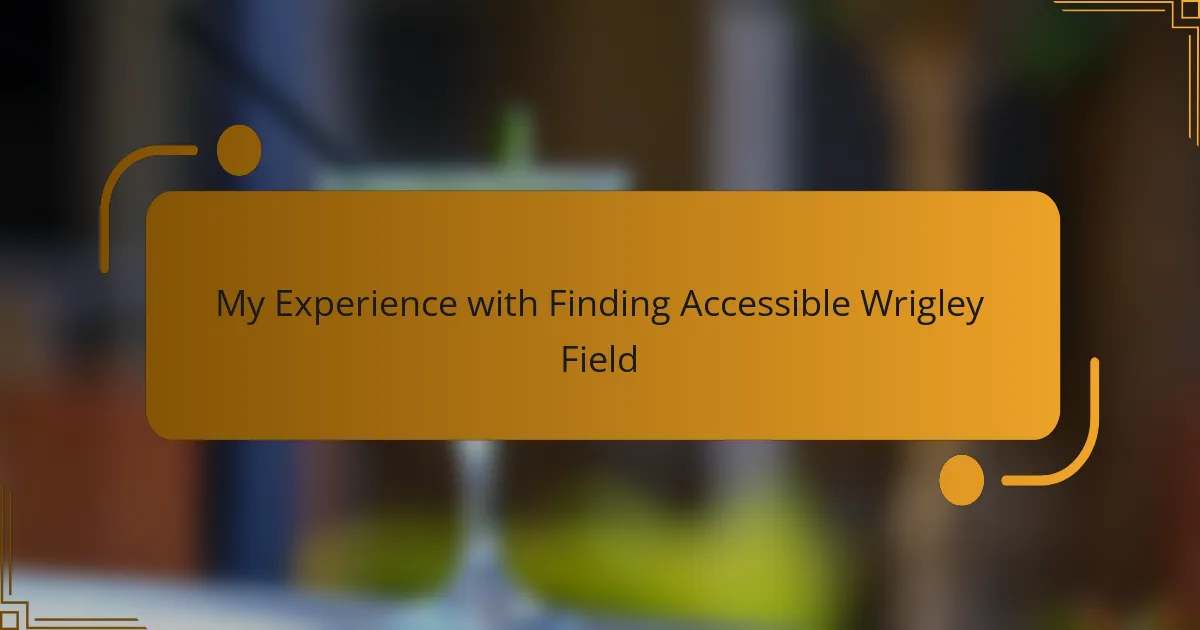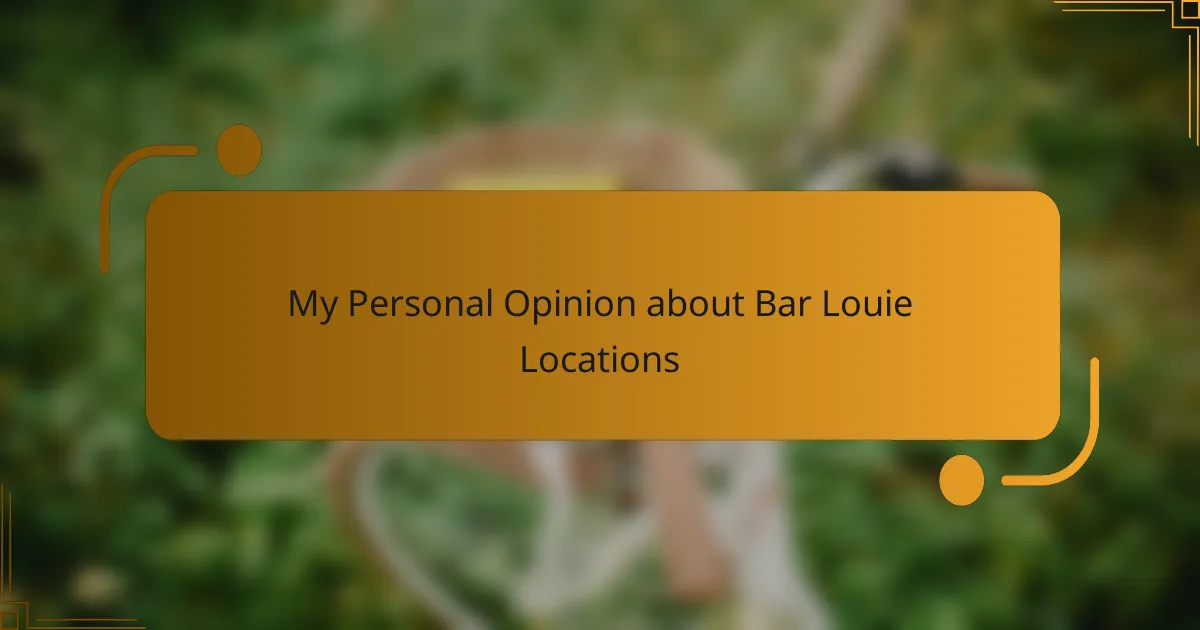Key takeaways
- Accessibility in sports bars goes beyond physical features, focusing on a welcoming environment that accommodates all guests effectively.
- Key accessibility elements include thoughtfully spaced seating, easily navigable restrooms, and clear, visible signage.
- Personal experiences emphasize the importance of staff awareness and a friendly atmosphere in making all visitors feel acknowledged and comfortable.
- Recommendations for improvement include addressing design obstacles, enhancing signage for inclusivity, and training staff to assist during peak times.
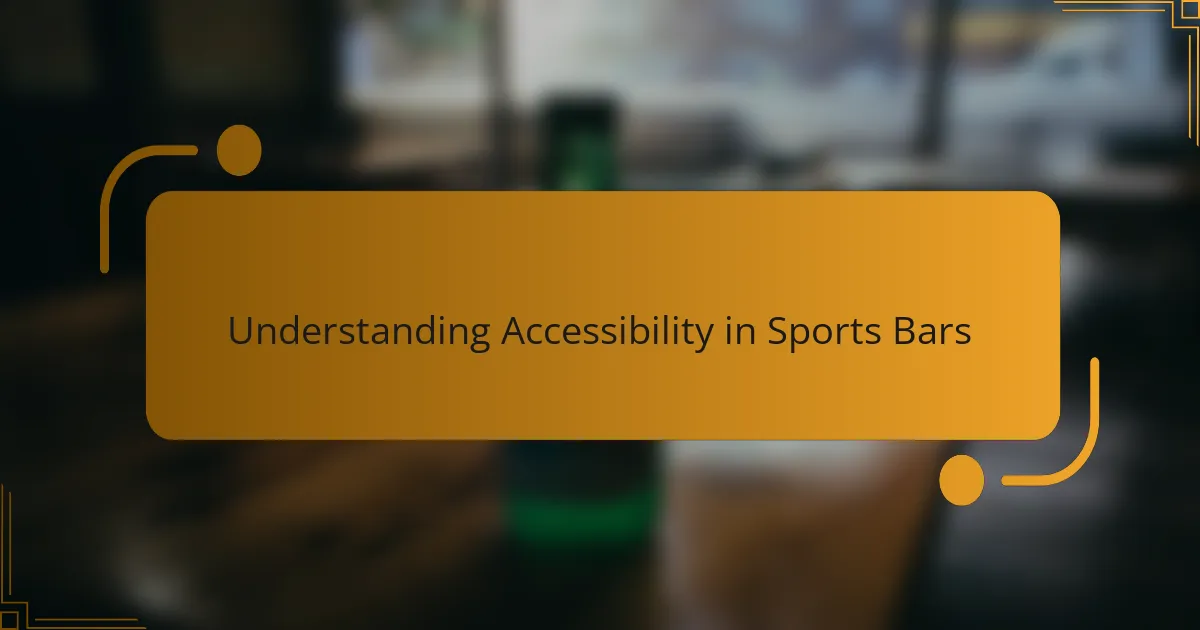
Understanding Accessibility in Sports Bars
When I first thought about accessibility in sports bars, I realized it’s more than just ramps and wide doorways. It’s about how welcoming the environment feels for everyone, whether you use a wheelchair or have other challenges. Have you ever walked into a place and immediately noticed whether it’s easy to navigate or if you feel like an obstacle yourself?
In my experience, good accessibility means paying attention to small details—like the height of the bar counters, spacing between tables, and clear signage. These might seem minor, but they make a huge difference in how comfortable and independent a visitor feels. It made me ask myself: Are sports bars really designed with all fans in mind, or just the majority?
I remember once struggling to find a restroom that was truly accessible in a busy sports bar, and that frustration stuck with me. It’s a reminder that accessibility isn’t only about ticking boxes but creating an inclusive vibe where no one feels left out during the game. What’s the point of a great game experience if some fans can’t fully join in?
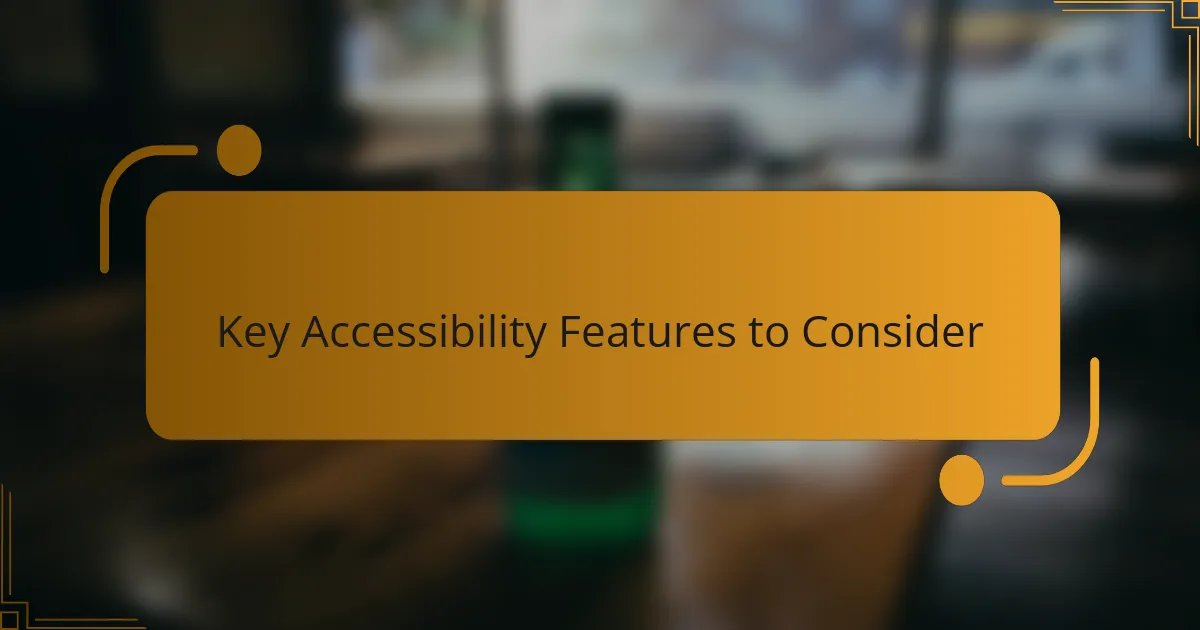
Key Accessibility Features to Consider
When I inspected Hard Rock Cafe’s accessibility, the first thing I focused on was the seating arrangements. Are the tables spaced wide enough to comfortably accommodate wheelchairs or those using walkers? I was relieved to find generous gaps that didn’t force you to shuffle sideways or feel cramped in your own spot.
Another feature I paid close attention to was the restroom facilities. Accessible restrooms should feel just as easy to use as any other, with grab bars positioned thoughtfully and enough room to maneuver. I remember how frustrating it’s been in other places where the doorways were too narrow or the locks too tricky—so I was genuinely impressed when Hard Rock got these right.
Lastly, clear signage isn’t something I’d typically notice until it’s missing. Do signs have large, readable fonts and are they placed where everyone can see them? At Hard Rock, these small but crucial details showed me they genuinely considered all their guests, which made me appreciate their effort beyond just meeting regulations. It got me thinking: when was the last time I felt truly seen as a visitor with accessibility needs?
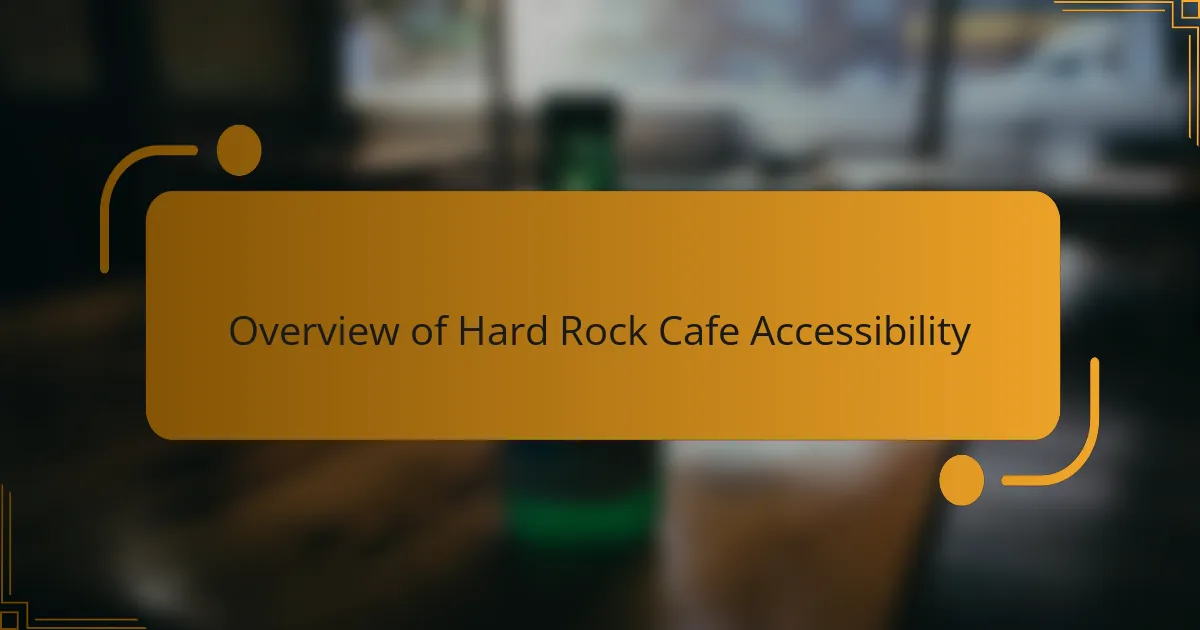
Overview of Hard Rock Cafe Accessibility
Walking into Hard Rock Cafe, I immediately noticed how the space felt open and inviting, not just physically but in the vibe it gave off. It wasn’t the kind of place where you’d worry about fitting in or navigating tight corners—something I’ve sadly come to expect elsewhere. I found myself asking, “Could accessibility actually enhance the whole experience rather than feel like an afterthought?”
What stood out to me was the thoughtful layout, from entrance to exit. The ramps and clear pathways didn’t just meet basic standards; they allowed smooth movement whether you’re in a wheelchair or just prefer extra space to move comfortably. I recall feeling a sense of relief and even enjoyment knowing that the environment supported independence rather than creating subtle barriers.
Of course, accessibility isn’t only about physical features—it’s the little signs that tell you someone cared about your experience. Hard Rock’s clear, visible signage and friendly staff made me realize how much these details contribute to a welcoming atmosphere. Have you ever visited a place where you felt truly acknowledged? That’s exactly what this felt like for me.

Methods Used to Analyze Hard Rock Cafe
To analyze Hard Rock Cafe’s accessibility, I began with a walk-through, paying close attention to how easy it was to navigate the space. I asked myself whether someone using a wheelchair or crutches could move around without constantly hitting obstacles or feeling cramped. This hands-on approach gave me a real sense of what it’s like to experience the venue firsthand.
I also took notes on specific features like the height of the bar, table spacing, and restroom setups. Have you ever tried reaching a bar counter that’s just out of comfortable reach? I have, and it’s frustrating. By testing these elements personally, I could see if Hard Rock’s design went beyond the basics. It wasn’t just about ticking boxes but about something genuinely usable.
Finally, I observed the signage and asked staff questions to gauge their awareness and helpfulness regarding accessibility. Clear, visible information and willing support can make or break someone’s visit. How welcoming is a place when the people working there truly understand your needs? In Hard Rock’s case, this added a layer of reassurance I didn’t expect but deeply appreciated.
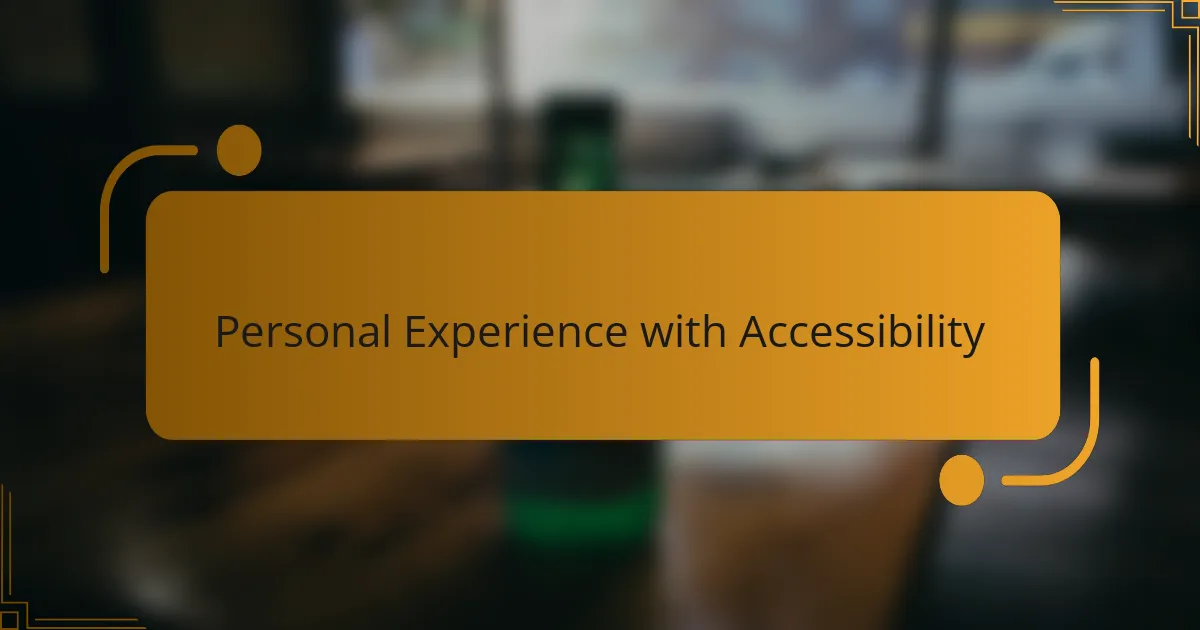
Personal Experience with Accessibility
I remember the moment I first rolled into Hard Rock Cafe’s main dining area. It struck me how easy it was to find a comfortable spot without feeling like I was squeezing through a maze. That simple ease felt like a breath of fresh air compared to other places where I’ve had to ask for help or just give up on finding a good spot.
There was one moment near the restroom that really stayed with me. I hesitated before entering, thinking about past experiences where tight doorways and awkward layouts caused unnecessary stress. But here, the space was clearly designed with care, and I felt genuinely reassured. It’s amazing how something so basic can completely change the vibe of a night out.
Have you ever felt invisible in a crowded bar? At Hard Rock, the staff’s attentive attitude made me feel seen and respected. They didn’t treat accessibility as an afterthought, and that made a huge difference. It reminded me that real inclusion is about people making you feel like you truly belong, not just about physical features.
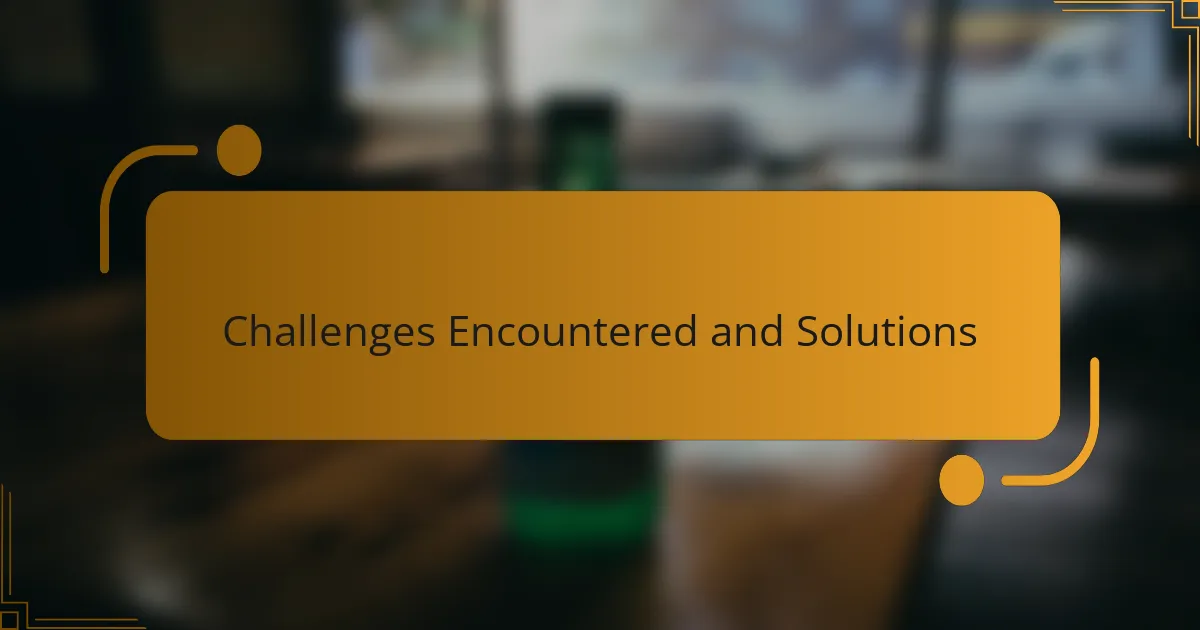
Challenges Encountered and Solutions
One challenge I noticed right away was that, despite wide aisles, some decorative elements occasionally narrowed the path, making navigation a bit tricky. I wondered if these design choices unintentionally created small barriers. Thankfully, Hard Rock’s staff was quick to guide me around these spots, showing how attentive training can compensate for physical limitations.
Another issue popped up around peak hours when the bar area became crowded, and moving through the space felt less smooth. It made me think—how can accessibility be maintained during busy times? The solution seemed to lie in flexible layouts or temporary adjustments, like rearranging furniture or directing foot traffic to ease congestion.
Lastly, while signage was clear, I found myself wishing for more tactile or audible cues to assist guests with visual impairments. It’s a reminder that accessibility isn’t one-size-fits-all. Still, the team’s openness to feedback convinced me they’re ready to address these gaps thoughtfully, aiming for continuous improvement rather than settling for the status quo.
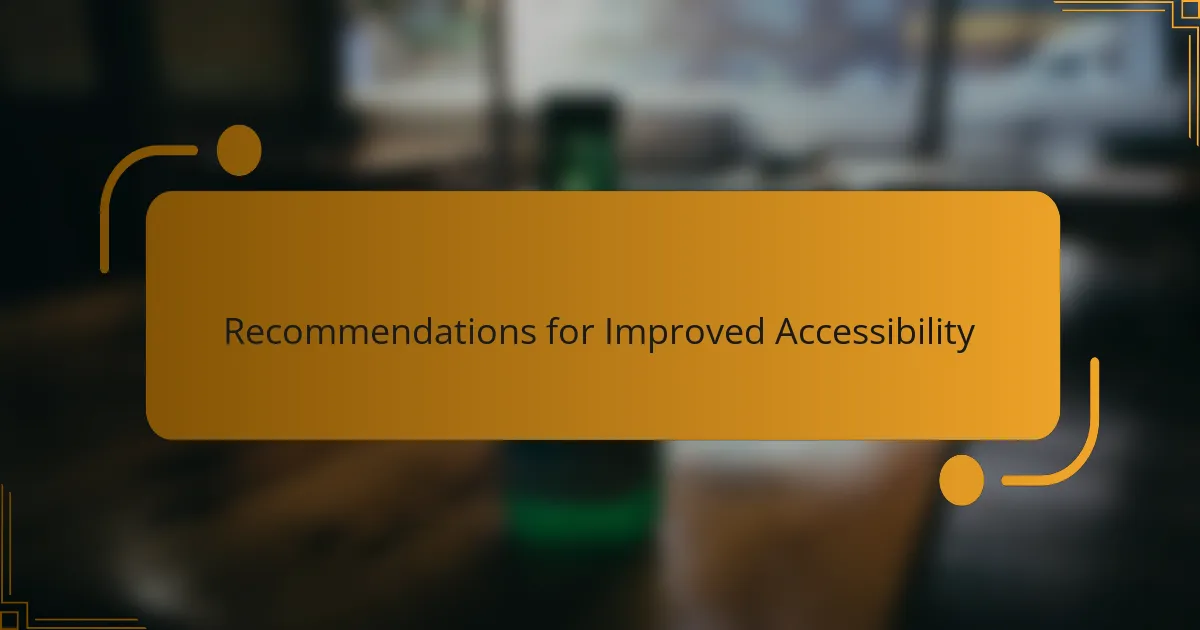
Recommendations for Improved Accessibility
One thing I’d recommend is rethinking some of those decorative elements that sometimes narrow the aisles. While they add character, they can become unexpected obstacles for someone using a wheelchair or walker. Have you ever bumped into a chair or a pillar and felt momentarily stuck? Adjusting or relocating a few pieces could make the flow feel effortless without losing any style.
Another improvement could be introducing tactile or audible signage. When I visited, I found the visual signs helpful, but I couldn’t help wondering how guests with visual impairments navigate the space. Adding these extra layers of communication shows real dedication to inclusive design. Do you think a simple audio guide or textured markers near restrooms would make a difference?
Finally, training staff to anticipate and respond swiftly during busy periods struck me as crucial. When crowds swell, even the best layouts can become challenging to navigate. From my experience, a well-informed team that guides guests proactively can transform moments of congestion into smooth experiences. Wouldn’t you agree that thoughtful service is often the key to true accessibility?
